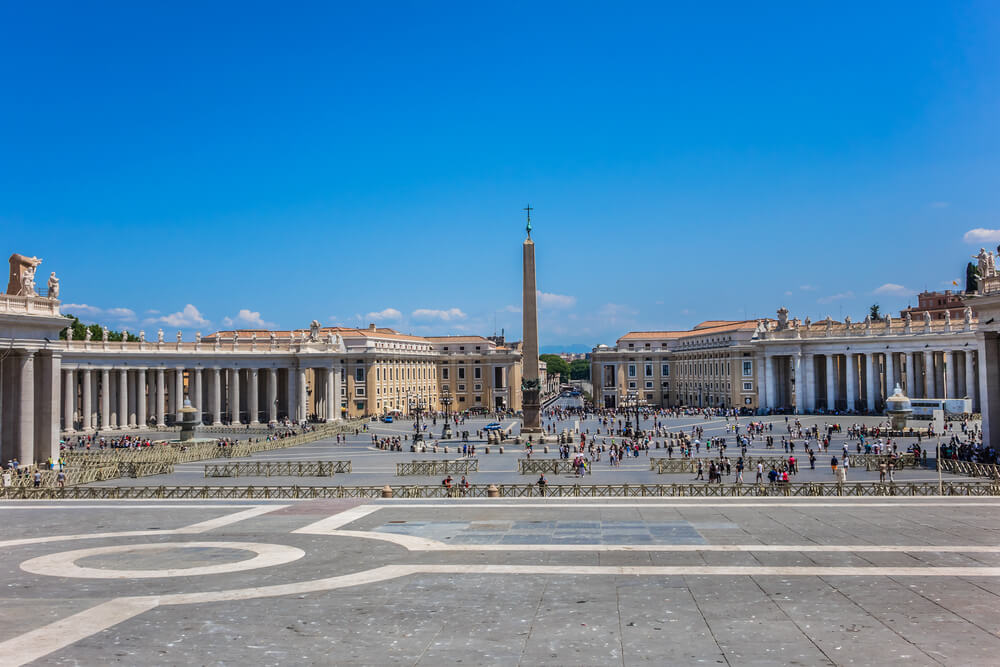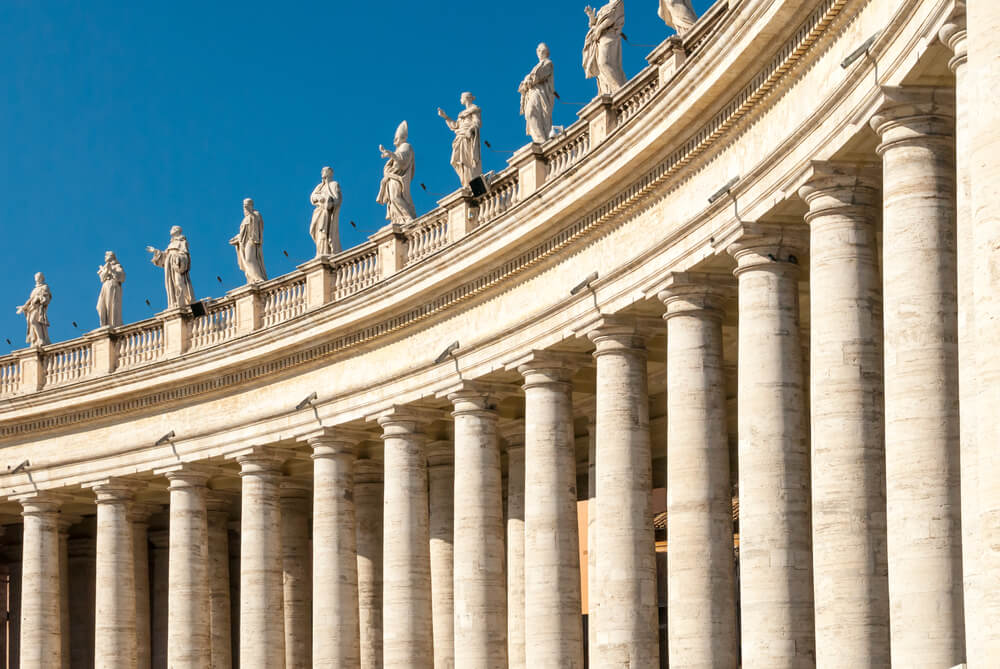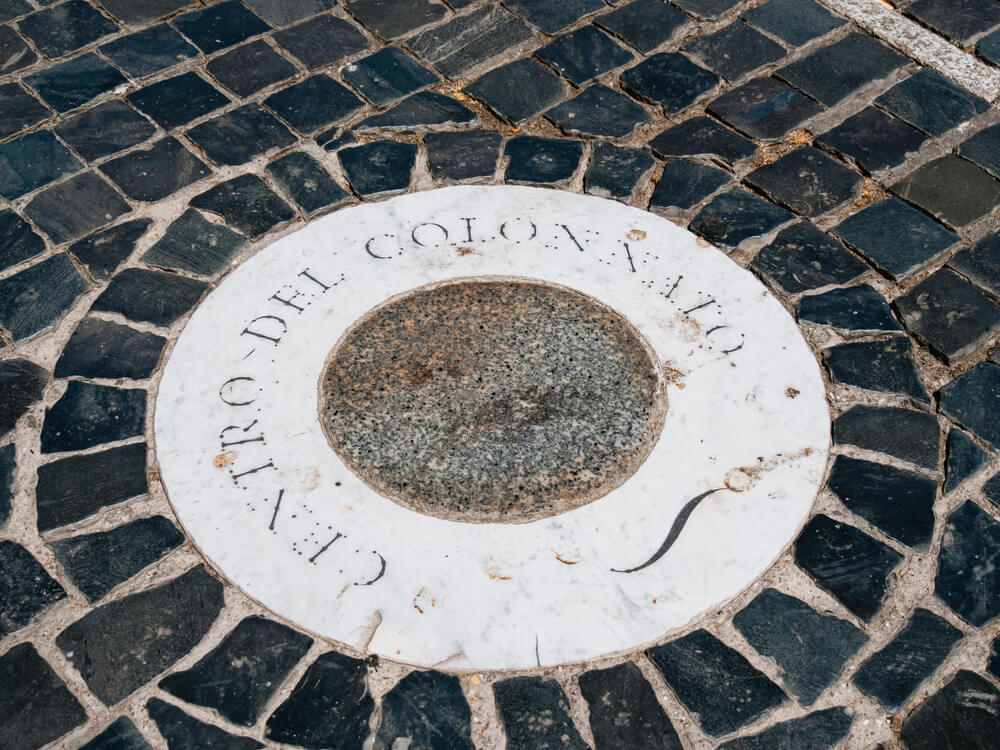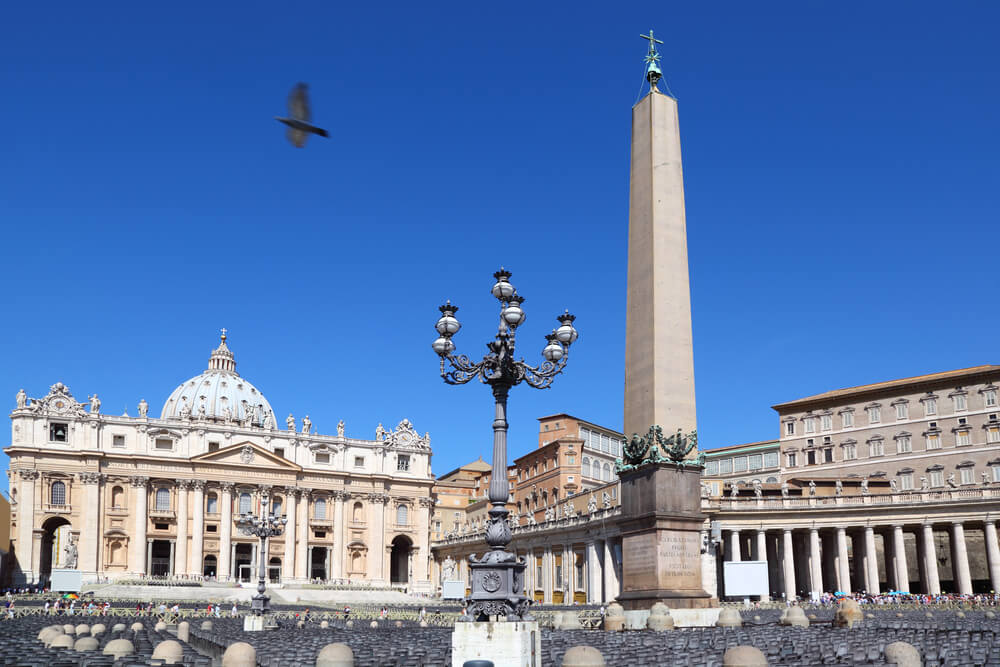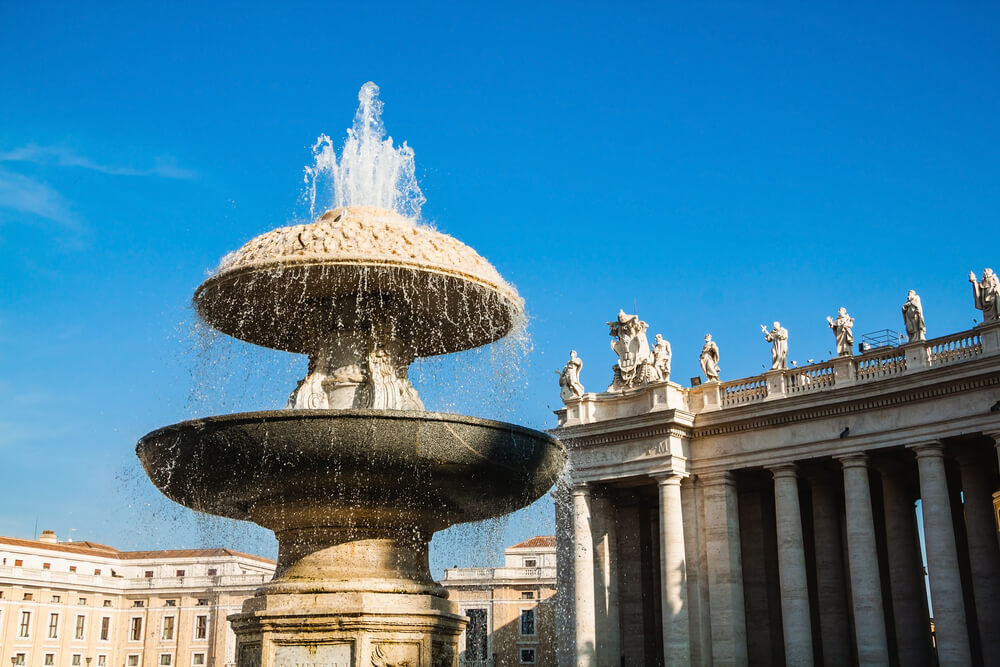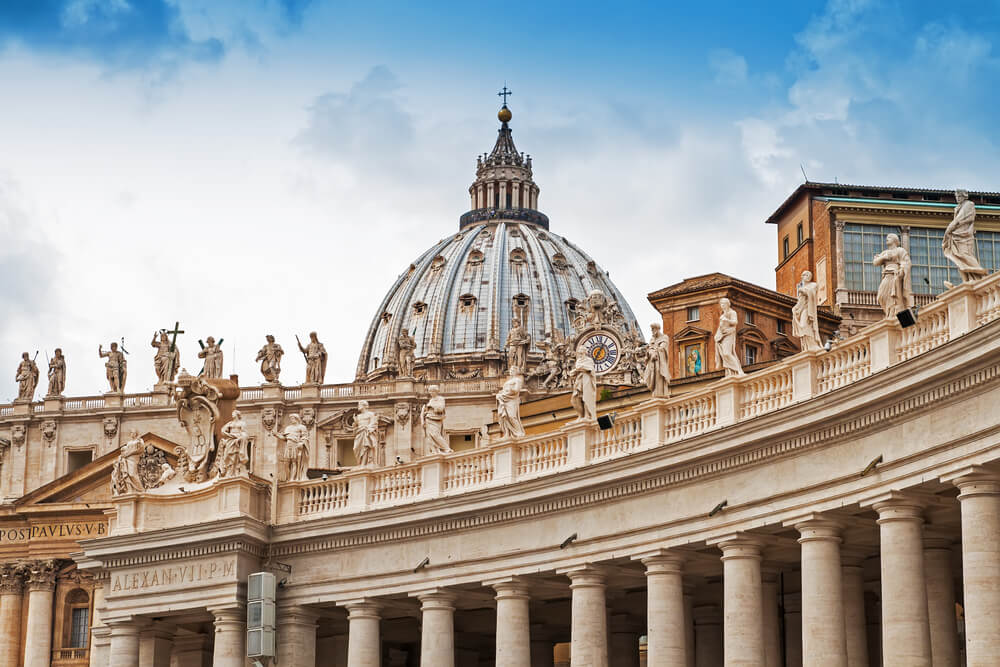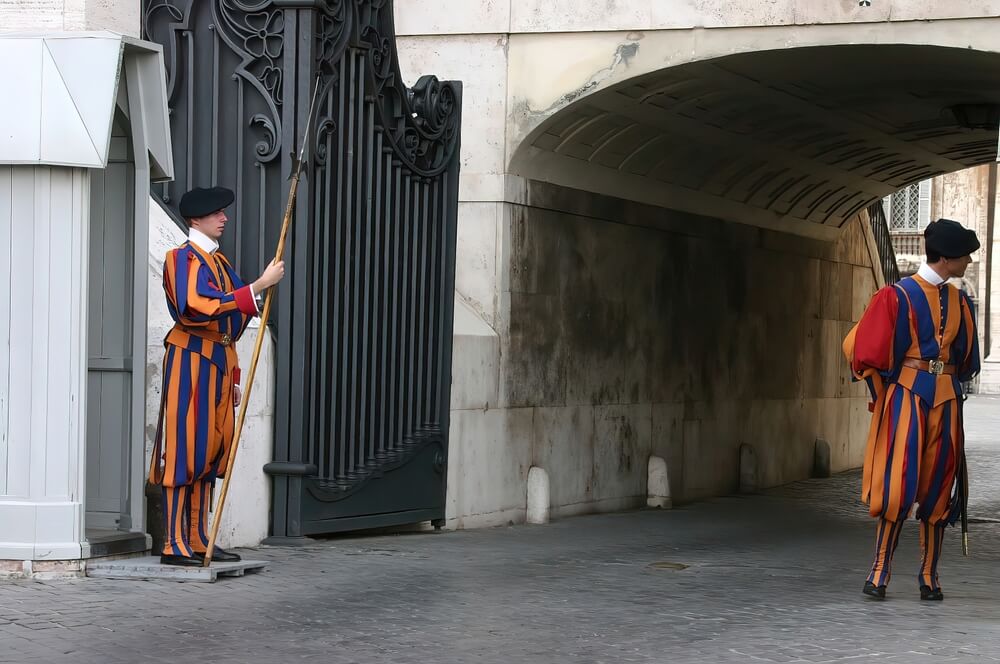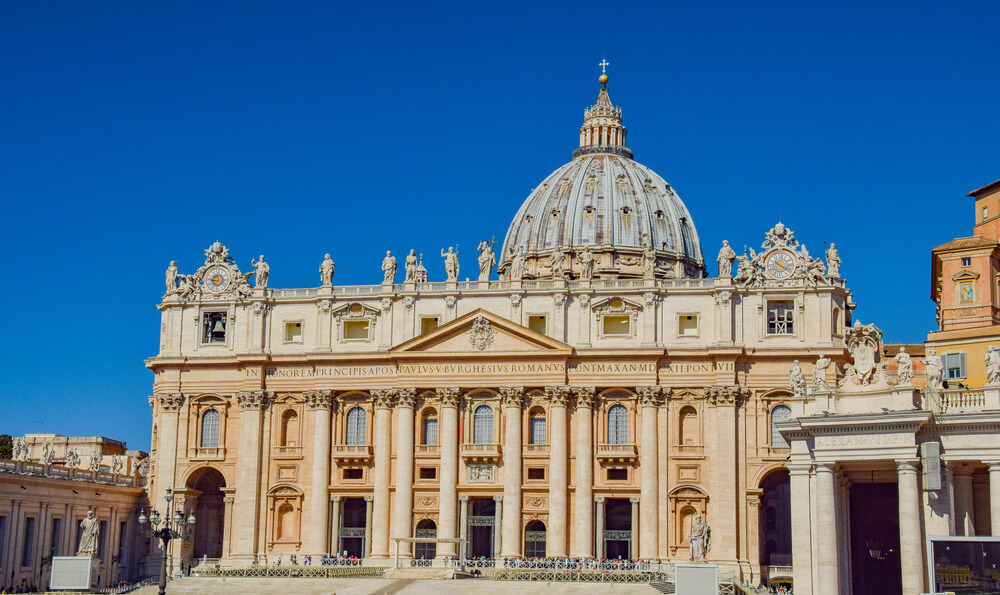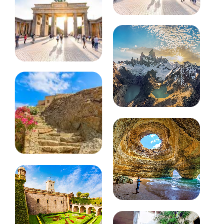St Peter’s Square in Rome, the Vatican’s most famous square
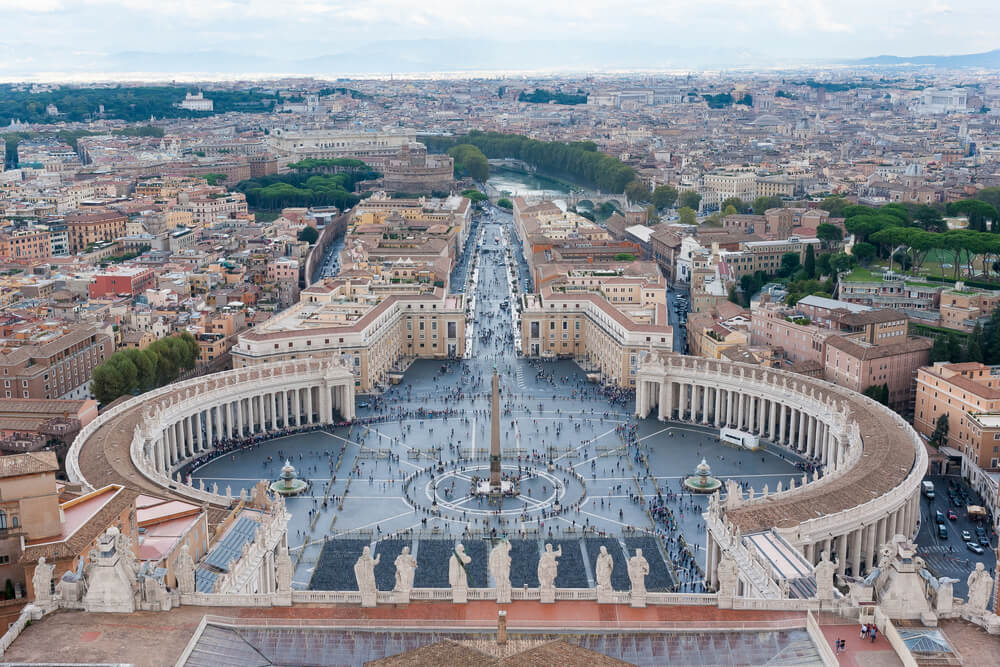
St Peter’s Square in Rome is undoubtedly the best-known square in Italy and certainly one of the best-known squares in the world.
Symbolic, magnificent and particularly vast, this square is one of the places not to be missed during your visit to Rome. Day or night, with family or friends, you can’t help but marvel at the grandiose Baroque architecture that has been impressing visitors since the 17th century.
Located in the Vatican City in front of St Peter’s Basilica, this esplanade is unique in the world, and can be reached via via della conciliazione or street of reconciliation before arriving in Piazza Pio XII. The passetto di borgo, or little passageway, is a fortified, elevated area that connects St Peter’s Square in the Vatican City with the Castel Sant’Angelo (St Angelo’s Castle) – you won’t want to miss it if you go past!
Who built St Peter’s Square in the Vatican?
St Peter’s Square was built in the 17th century as a meeting place for the Catholic faithful and a focal point for major Catholic religious festivals. The square was commissioned by Pope Alexander VII.
The choice of site was highly symbolic, as it was the location of St Peter’s tomb. The architect Bernini was responsible for the construction work, and was considered to be as talented as Michelangelo. Construction lasted 11 years, from 1656 to 1667 AD. You’re sure to be impressed by the 284 columns and 88 pillars…
What can you see in Rome’s St Peter’s Square or Vatican Square?
Here are a few figures to give you an idea of the size of the square and the wealth of architectural features you’ll find there:
- 320 metres long,
- 240 metres wide,
- 300,000 people can be accommodated in the square,
- 284 columns 17 m high,
- 88 pilasters (columns set into a wall) 20 metres high,
- 140 statues of saints, each 3.10 metres high,
- 1 Egyptian obelisk, 25 metres high…
The square is made up of 2 arches, each with 4 rows of Doric columns, making it possible to create 3 traffic lanes.
What’s special is that if you stand on one of the 2 marble discs bearing the inscription “centro del colonnato”, located between the obelisk and the two fountains, you’ll see that the 4 columns merge into a single column. The optical illusion is perfect and well worth seeing.
The first space, located in front of St Peter’s Basilica, is shaped like a trapezium, representing two closed arms. The 2nd is elliptical in shape, with two 1/2 circles composed of a quadruple colonnade representing arms welcoming the faithful. Bernini (Gian Lorenzo Bernini) said: “Since the church of St Peter’s is the mother of all others, it should have a portico that shows its desire to receive Catholics with open, maternal arms”, but also “heretics, to guide them towards the Church, and infidels, to enlighten them on the path of the true faith”. It took no less than 11 years to build St Peter’s Square between 1656 and 1667. The square can accommodate 150,000 people or more during major religious events.
In front of the steps of the basilica, you will see two large statues, each 5.55 metres high and standing on a pedestal almost 5 metres high: the statue of Saint Peter to the south and the statue of Saint Paul to the north.
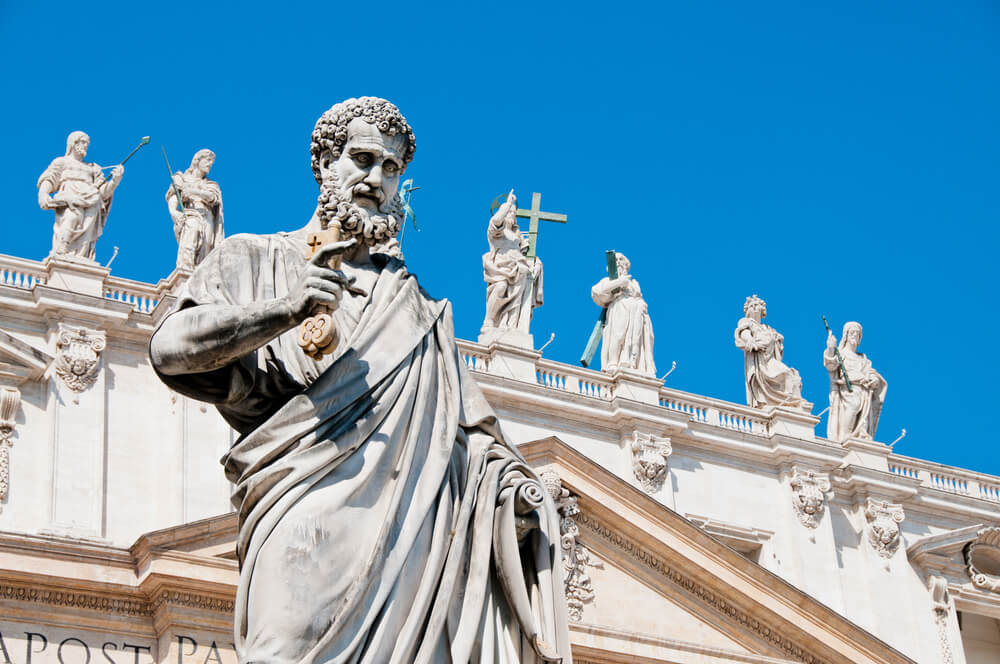
Statue of Saint Peter in front of Saint Peter’s Basilica
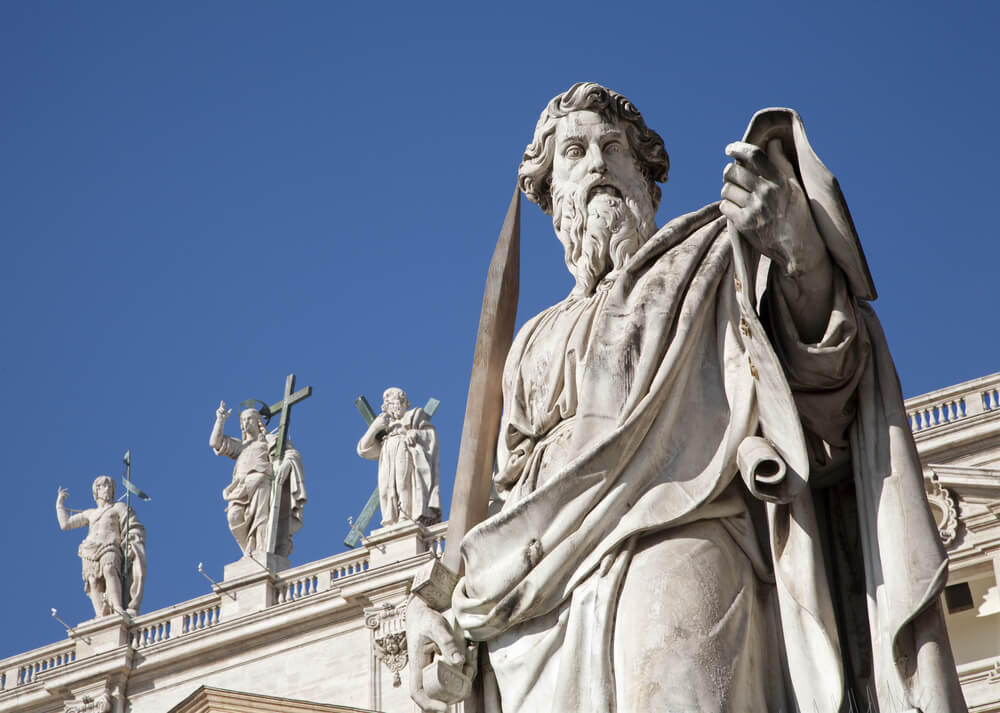
Statue of Saint Paul
The Vatican obelisk originated in Egypt and was brought back from a campaign by the emperor Caligula. Its location is no coincidence: it is the exact spot where the apostle Peter was crucified. The architect Domenico Fontana was responsible for moving and restoring it, on the orders of Pope Sixtus V.
The twin fountains are arranged on either side of the obelisk: to the north (Gregoriana) and south (Clementina), the papal coats of arms and dolphins adorn the fountains in the centre of Saint Peter’s Square. The upper basin is decorated with small reliefs that produce an effect of fine droplets diffusing like a very fine veil of water. The authorship of these fountains is associated with Carlo Fontana, who himself claims them to be the work of Bernini (Gian Lorenzo Bernini)… A mystery. Perhaps you’ll find out more on a guided tour.
The compass rose, created by Filippo Gigli in 1817, provides information on the 8 winds that blow across the city of Rome, while the sundial has the obelisk as its pointer.
St Peter’s Square in Rome and its 140 statues of saints and martyrs
Many Italian and French sculptors of the 17th century were involved in the creation of these statues: Lazzaro Morelli, Giacomo Antonio Fancelli, Pierre-Étienne Monnot, Jean-Baptiste Théodon, Bartolommeo Cennini, Giuseppe De Fabris…
They mainly represent men, but also a few women (38 in all), martyred saints, popes and bishops, noblemen, church reformers, etc. These people mainly come from Italy, France and Spain.
The Swiss Guards
The Swiss Guards are responsible for protecting the Vatican City State or Holy See. They have been protecting the Pope and his residence since 1506. You’ll find them at the bronze gate in their colourful uniforms.
Contrary to popular belief, the uniform is certainly Renaissance in style, but it was not created at that time. Its history is quite different: it was a commander of the Swiss Guard who came up with the idea much later in the 20th century. He was, however, inspired by a model by Michelangelo, who lived during the Renaissance period. The Vatican army is the smallest in the world, with just 110 soldiers.
Please note: these are real soldiers, not there to parade around and take selfies with tourists! If you want to take a photo of them, make sure you keep a safe distance.
St Peter’s Basilica
Built in the fourth century, it was the most important place of pilgrimage in the West from the early Middle Ages onwards. It underwent major changes in the 16th century at the instigation of Pope Julius II: what had been a church for 1,200 years was in danger of falling into ruin and was replaced by the current basilica in 1506, when work began. The work lasted a century, and thousands of workers were involved in this titanic project in Rome’s city centre. The façade and nave were designed by the architect Carlo Maderno.
Grandiose, monumental, superb… There is no shortage of superlatives in the comments made by visitors, because the views both inside and out are simply fabulous. A legendary monument. The richness of the decoration, the finesse of the details, the monumental pillars, the polychrome marble, the dome designed by Michelangelo, the funerary monument of Pope Alexander VII Chigi… To finish the visit in style, thanks to an access that will take you to the top of the dome, you will have an exceptional 360-degree view of the city of Rome, the colonnades, the fountain, and the crowds of visitors, whatever the time of day.
Where is St Peter’s Square?
St Peter’s Square is located in Piazza San Pietro, Vatican City, Rome.
How do I get to St Peter’s Square?
By Metro to St Peter’s Square
Ottaviano station, line A (red).
By bus to St Peter’s Square
Buses 40, 62, 64, 81.
By tram to Piazza Saint-Pierre
Stop at Piazza del Risorgimento.
By car to Piazza Saint-Pierre
It is impossible to enter Vatican City by car. The nearest car parks are :
- Parking Prati, in Piazza Unità, 62 – 193
- Garage San Pietro, on Via di Santa Maria alle Fornaci, 26 – 165 (5 minutes’ walk).
- Garage Vespasian.
Website: https://www.parkingroma.it/ Book your local car park online using your e-mail address.
Things to do :
The Sistine Chapel: one of the halls of the Vatican’s papal palaces, this chapel is part of the Vatican Museums. The Circus Maximus or Circo Massimo: this monument was the largest stadium in Rome in the tradition of chariot racing, measuring 600 metres in length. The remains of this huge building can still be seen today. If you’re looking for a souvenir or religious item, the many shops around Piazza San Pietro should satisfy your curiosity.
200 audioguided tours for cities all around the world
Download